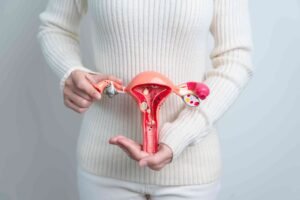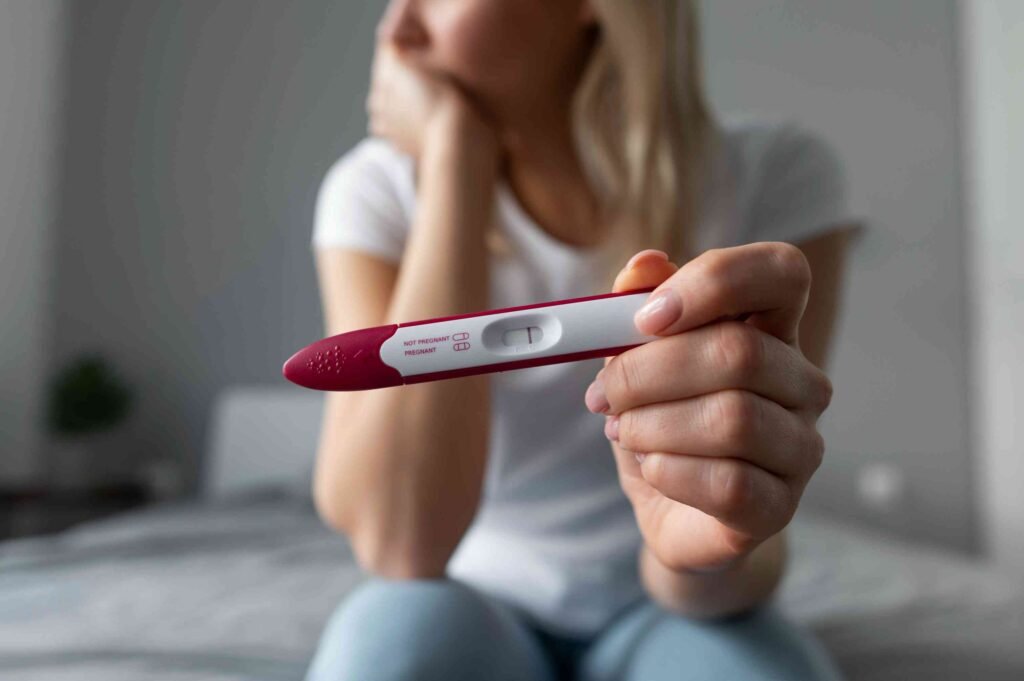Tubal Factor Infertility: Causes and Treatment Options
If you’ve been trying to conceive for a while and things aren’t going the way you hoped, it can be incredibly frustrating—not to mention emotionally draining. One of the lesser-talked-about yet very common reasons behind female infertility is something called Tubal Factor Infertility. It affects a significant percentage of women struggling with conception, and understanding it could be the key to unlocking your fertility journey.
Let’s dive into what this condition really means, what causes it, how it’s diagnosed, and most importantly—what can be done about it.

What Is Tubal Factor Infertility?
Before we get into the specifics, let’s take a moment to understand how the female reproductive system works during conception. Each month, an egg is released from one of the ovaries and travels down the fallopian tube. If it meets sperm along the way, fertilization can occur. The fertilized egg then continues its journey to the uterus for implantation.
Now, imagine if there’s a roadblock along this pathway—whether it’s inflammation, scarring, or a complete blockage of the fallopian tubes. This is essentially what Tubal Factor Infertility is all about: any issue with the fallopian tubes that prevents the egg and sperm from meeting, or stops a fertilized egg from reaching the uterus.

It’s not always a total blockage, either. Even partial damage can lead to serious fertility problems, including ectopic pregnancies or reduced chances of natural conception.
Understanding the Causes of Tubal Factor Infertility
There isn’t just one single cause behind tubal damage—it can be triggered by various medical conditions, past surgeries, or even infections. Let’s take a look at some of the most common culprits.
1. Pelvic Inflammatory Disease (PID)
One of the top contributors to tubal issues is PID, a condition often caused by sexually transmitted infections like chlamydia or gonorrhea. Even if the infection happened years ago and was treated, the lingering effects—like scarring or adhesions—can permanently damage the fallopian tubes.
2. Endometriosis
Endometriosis is a condition where tissue similar to the uterine lining grows outside the uterus. If this growth affects the fallopian tubes, it can lead to inflammation, scar tissue, or distortions in the pelvic anatomy that impact fertility.

3. Previous Abdominal or Pelvic Surgery
Surgeries for things like appendicitis, fibroids, or cesarean deliveries can sometimes lead to adhesions or scar tissue that impinge on the fallopian tubes, affecting their function.
4. Ectopic Pregnancy
If you’ve had an ectopic pregnancy in the past, especially one that occurred in a fallopian tube, the chances of tubal damage go up significantly. In some cases, the tube might even be removed surgically, reducing fertility options.
5. Tubal Ligation and Reversal Attempts
Some women choose to undergo tubal ligation (commonly referred to as “getting your tubes tied”) as a permanent birth control method. Later in life, they may wish to reverse it, but this procedure can leave the tubes scarred or narrowed, which could lead to Tubal Factor Infertility.
Diagnosing Tubal Factor Infertility
If your doctor suspects tubal issues as a possible reason for infertility, several tests are available to provide a clearer picture. While none are 100% perfect on their own, when used together, they offer valuable insights.
Hysterosalpingogram (HSG)
This is a common diagnostic test that involves injecting a special dye into the uterus and fallopian tubes. X-rays are then taken to observe the flow of the dye. If the tubes are open, the dye will pass through freely. Blocked tubes, however, will show no dye passage.
Sonohysterogram
This procedure uses ultrasound along with saline solution to get a better view of the uterus and tubes. It’s less invasive than an HSG and doesn’t involve radiation, but may not be as accurate in detecting fine adhesions.
Laparoscopy
For a more definitive diagnosis, doctors may suggest laparoscopy. This is a minimally invasive surgery where a tiny camera is inserted through a small incision near the belly button. It allows direct visualization of the fallopian tubes, ovaries, and pelvic organs.

Treatment Options for Tubal Factor Infertility
Here’s the good news: Tubal Factor Infertility doesn’t automatically mean you can’t get pregnant. Thanks to advances in medical technology and surgical techniques, there are several ways to work around—or even repair—the problem.
Let’s go through your main options.
1. Tubal Surgery
Depending on the extent and location of the damage, surgical repair might be an option. This includes:
a. Tuboplasty: A procedure to remove scar tissue and reopen the tubes.
b. Fimbrioplasty: Aims to reconstruct the end (fimbriae) of the fallopian tube to allow egg pickup.
c. Salpingostomy: Creating a new opening in the tube when the end is blocked.
Success rates vary based on age, the severity of the damage, and the type of surgery performed. However, it’s worth noting that tubal surgery is becoming less common, especially with IVF being widely available and more predictable.
2. In Vitro Fertilization (IVF)
IVF is often considered the gold standard treatment for Tubal Factor Infertility, especially in cases where the tubes are severely damaged or completely blocked.
Here’s how it works:
a. The ovaries are stimulated to produce multiple eggs.
b. The eggs are retrieved and fertilized with sperm in a lab.
c. The resulting embryos are then transferred directly into the uterus, bypassing the fallopian tubes entirely.
Since the tubes aren’t involved at all, IVF offers a high success rate for women dealing with tubal issues. In fact, for many, it’s the most effective route to parenthood.

3. Salpingectomy Before IVF
In cases where the fallopian tubes are swollen and filled with fluid (a condition called hydrosalpinx), doctors often recommend removing the damaged tubes before starting IVF. This is because the fluid can leak into the uterus and reduce the chances of embryo implantation.
While the idea of losing your tubes may seem counterintuitive, research shows that IVF success rates improve significantly after salpingectomy in such cases.
4. Donor Eggs or Embryo Adoption
If both the tubal issues and egg quality are concerns—especially in older women—some couples explore donor egg IVF or embryo adoption as alternatives. These options may also be considered if multiple IVF cycles with your own eggs haven’t been successful.
Can Tubal Factor Infertility Be Prevented?
In many cases, especially those related to infection or lifestyle factors, prevention is possible. Here are a few proactive steps to consider:
- Practice safe sex: STIs are a major contributor to tubal damage. Using protection and getting regular screenings can prevent complications down the line.
- Address pelvic pain early: Chronic pelvic discomfort or abnormal periods shouldn’t be ignored, especially if endometriosis is suspected.
- Avoid unnecessary pelvic surgeries: Always explore non-surgical alternatives first and get second opinions if surgery is recommended.
- Get prompt treatment for infections: The earlier you treat conditions like PID or appendicitis, the lower the risk of lasting damage.
Emotional and Psychological Impact
It’s important to recognize that Tubal Factor Infertility, like any fertility issue, can take a toll on your mental health. The process of diagnosis, treatment decisions, and dealing with potential delays in your family-building plans can feel isolating and overwhelming.
You’re not alone. Whether it’s through a support group, therapy, or connecting with others going through similar experiences, having emotional support is just as vital as medical intervention. Talking to a fertility counselor can also help navigate the ups and downs of treatment.
Lifestyle Changes That May Help
While lifestyle changes can’t “fix” tubal blockages, they can improve your overall reproductive health, making you a better candidate for fertility treatments like IVF.
- Maintain a healthy weight: Obesity and being underweight both affect hormone levels and ovulation.
- Quit smoking: Smoking is linked to increased risk of ectopic pregnancy and poorer IVF outcomes.
- Limit alcohol and caffeine: Moderation is key. These substances can affect fertility, especially in large amounts.
- Eat nutrient-rich foods: A fertility-friendly diet that includes antioxidants, healthy fats, and whole grains supports hormone balance and egg quality.

Final Thoughts on Tubal Factor Infertility
Dealing with Tubal Factor Infertility isn’t easy. But today, more than ever, there are real, effective options that can lead to pregnancy and parenthood. Whether it’s through surgery, IVF, or even donor-assisted reproduction, there’s hope.
Every fertility journey is deeply personal, and there’s no one-size-fits-all solution. But with the right medical care, support system, and information, you can make empowered decisions about your reproductive health.
If you suspect tubal issues or have been trying to conceive without success, talk to a fertility specialist. A comprehensive evaluation can uncover the root cause and guide you toward the next best steps.



